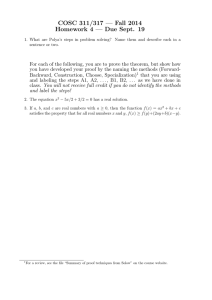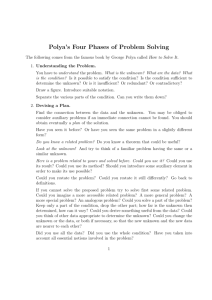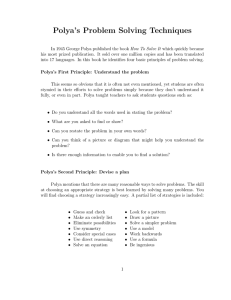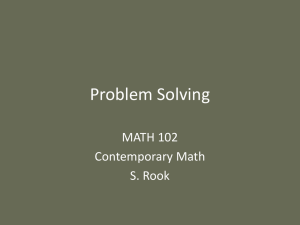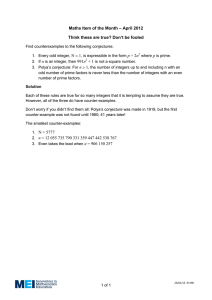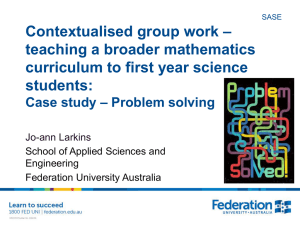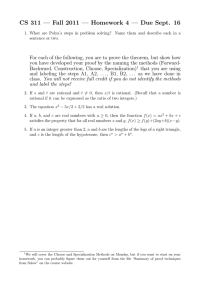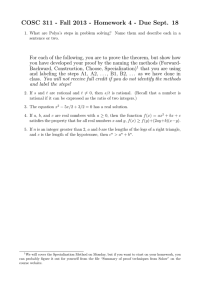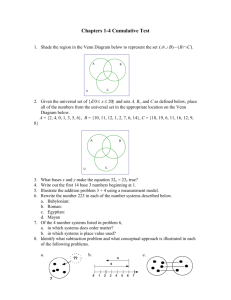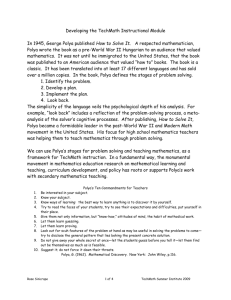easoning Meets
advertisement
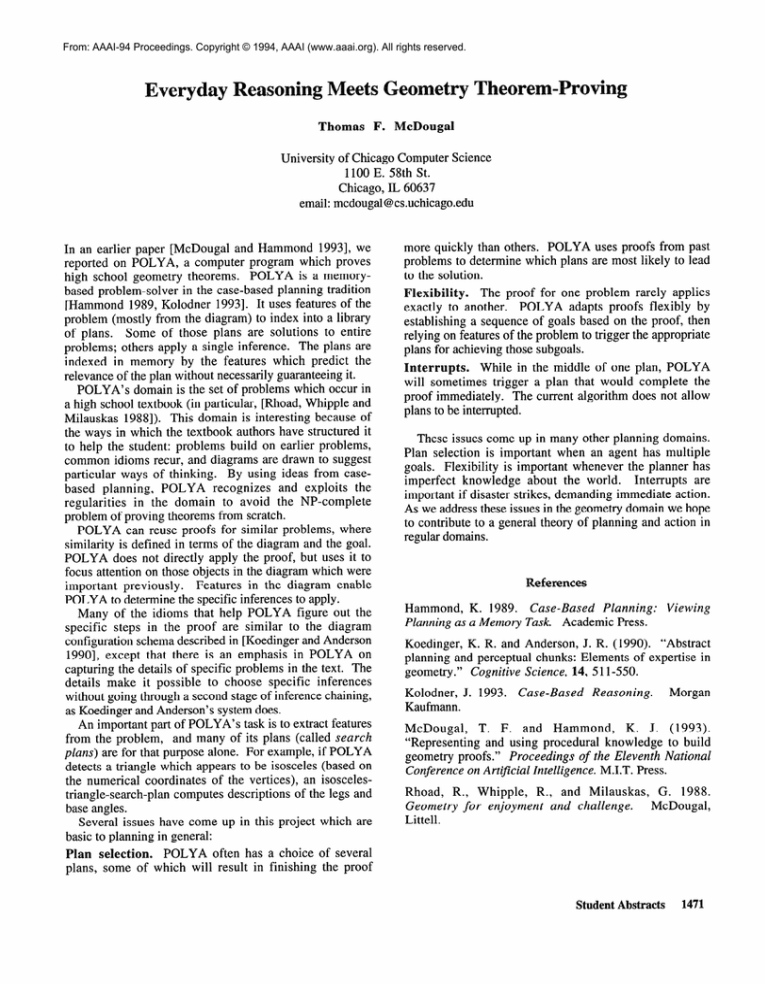
From: AAAI-94 Proceedings. Copyright © 1994, AAAI (www.aaai.org). All rights reserved. easoning Meets Thomas F. McDougal University of Chicago Computer Science 1100 E. 58th St. Chicago, IL 60637 email: mcdougal@cs.uchicago.edu In an earlier paper [McDougal and Hammond 19931, we reported on POLYA, a computer program which proves high school geometry theorems. POLYA is a memorybased problem-solver in the case-based planning tradition [Hammond 1989, Kolodner 19931. It uses features of the problem (mostly from the diagram) to index into a library of plans. Some of those plans are solutions to entire problems; others apply a single inference. The plans are indexed in memory by the features which predict the relevance of the plan without necessarily guaranteeing it. POLYA’s domain is the set of problems which occur in a high school textbook (in particular, [Rhoad, Whipple and Milauskas 19881). This domain is interesting because of the ways in which the textbook authors have structured it to help the student: problems build on earlier problems, common idioms recur, and diagrams are drawn to suggest particular ways of thinking. By using ideas from casebased planning, POLYA recognizes and exploits the regularities in the domain to avoid the NP-complete problem of proving theorems from scratch. POLYA can reuse proofs for similar problems, where similarity is defined in terms of the diagram and the goal. POLYA does not directly apply the proof, but uses it to focus attention on those objects in the diagram which were important previously. Features in the diagram enable POLYA to determine the specific inferences to apply. Many of the idioms that help POLYA figure out the specific steps in the proof are similar to the diagram configuration schema described in [Koedinger and Anderson 19901, except that there is an emphasis in POLYA on capturing the details of specific problems in the text. The details make it possible to choose specific inferences without going through a second stage of inference chaining, as Koedinger and Anderson’s system does. An important part of POLYA’s task is to extract features from the problem, and many of its plans (called search plans) are for that purpose alone. For example, if POLYA detects a triangle which appears to be isosceles (based on the numerical coordinates of the vertices), an isoscelestriangle-search-plan computes descriptions of the legs and base angles. Several issues have come up in this project which are basic to planning in general: Plan selection. POLYA often has a choice plans, some of which will result in finishing more quickly than others. POLYA uses proofs from past problems to determine which plans are most likely to lead to the solution. Flexibility. The proof for one problem rarely applies exactly to another. POLYA adapts proofs flexibly by establishing a sequence of goals based on the proof, then relying on features of the problem to trigger the appropriate plans for achieving those subgoals. Interrupts. While in the middle of one plan, POLYA will sometimes trigger a plan that would complete the proof immediately. The current algorithm does not allow plans to be interrupted. These issues come up in many other planning domains. Plan selection is important when an agent has multiple goals. Flexibility is important whenever the planner has imperfect knowledge about the world. Interrupts are important if disaster strikes, demanding immediate action. As we address these issues in the geometry domain we hope to contribute to a general theory of planning and action in regular domains. References Hammond, K. 1989. Case-Based Planning: Planning as a Memory Task. Academic Press. Viewing Koedinger, K. R. and Anderson, J. R. (1990). “Abstract planning and perceptual chunks: Elements of expertise in geometry.” Cognitive Science, 14, 5 1 l-550. Kolodner, J. 1993. Kaufmann. Case-Based Reasoning. Morgan McDougal, T. F. and Hammond, K. J. (1993). “Representing and using procedural knowledge to build geometry proofs.” Proceedings of the Eleventh National Conference on Artificial Intelligence. M.I.T. Press. Rhoad, R., Whipple, R., and Milauskas, Geometry for enjoyment and challenge. Littell. G. 1988. McDougal, of several the proof Student Abstracts 1471
